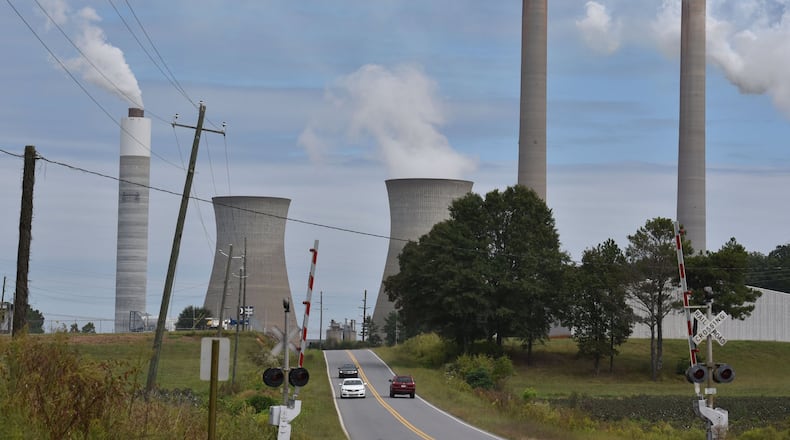As Georgia Power winds down its reliance on coal to generate electricity, it has found that the ash left behind by decades of combustion can be used in one of the most highly sought building materials on Earth: concrete.
On Wednesday, the company announced plans to begin harvesting roughly 600,000 tons of coal ash each year from Plant Bowen near Cartersville to produce concrete for roads, buildings and bridges across Georgia. Once fully operational, the Bowen project will be the largest single coal ash reuse project in the country, the company said.
Coal ash, the dust-like residue that’s left behind from burning coal in power plants, can be used safely to make construction materials. However, ash does contain heavy metals like mercury, cadmium and arsenic, which can contaminate water supplies if not handled properly, according to the EPA.
Plant Bowen is home to the largest of Georgia Power’s 29 coal ash ponds around the state and contains an estimated 20 million cubic yards of ash, according to Aaron Mitchell, Georgia Power’s vice president of environmental affairs. The company expects to be able to harvest around 9 million tons of coal ash at Bowen over the life of the project.
Georgia Power said it will begin installing necessary infrastructure immediately and expects to begin recycling ash at Plant Bowen in 2024.
To reuse the material, Georgia Power is partnering with Eco Material Technologies, a marketer and distributor of coal ash and producer of cement alternatives. The companies touted the economic and environmental benefits that come from putting coal ash to beneficial use.
Credit: Sam Baskin
Credit: Sam Baskin
Mitchell said customers will benefit from Georgia Power’s efforts to keep coal ash out of storage ponds and landfills. First, he said the revenue the company receives from selling its ash is credited against the cost of closing its coal ash ponds around the state. Second, harvesting coal ash will shrink the size of the landfills and other storage facilities that need to be built to permanently store the remaining material.
“Finding and securing these opportunities to beneficially use coal ash will not only reduce and save space in landfills, but will also serve as a financial tool to help offset the cost of ash pond closures for our customers,” Mitchell said in a news release.
Georgia Power is already reusing coal ash left behind at Plant Mitchell, a retired coal power station near Albany that was shuttered in 2016. Today, the company says it puts more than 90% of the coal ash still being generated at its remaining active coal-fired plants today to beneficial use.
Mitchell estimated that the new effort at Plant Bowen, along with initiatives at other Georgia facilities to recycle waste left behind from burning coal, could bring in $200 million to $300 million in revenue. While significant, that will only cover a fraction of the nearly $9 billion the company says it will have to spend over the next 60 years to close its remaining coal ash ponds.
Using coal ash in concrete also has environmental benefits.
Producing cement needed for construction is energy intensive and accounts for roughly 8% of the global greenhouse gas emissions that are driving climate change. Using existing coal ash in place of new cement in concrete can reduce the sector’s environmental impact.
“As the largest partnership of its kind in the U.S., this project will not only use material from landfills and ash ponds, but also keep millions of tons of CO2 from going into the atmosphere,” Grant Quasha, the CEO of Eco Material Technologies, said in a release.
Though it is diverting more ash from landfills, Georgia Power is still planning to store millions of cubic yards of the potentially toxic material in unlined pits at several other sites around the state. In some cases, the company’s plans call for coal ash to be left submerged in groundwater.
Residents living near one of those sites at Plant Scherer, located 25 miles from Macon, have sued Georgia Power, alleging that coal ash poisoned their well water. The utility has denied those claims.
About the Author
Keep Reading
The Latest
Featured





